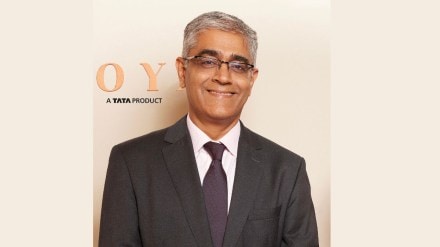Titan’s jewellery division posted 19% revenue growth in the second quarter ended September 30, 2023, and added 39 stores, taking the total count to 598. Luxury product sales, which contributed 7% to its sales until three years ago, now contribute close to 11%. In an interview to Akanksha Nagar, Ajoy Chawla, CEO, jewellery division, Titan Company, talks about the premiumisation trend sweeping categories and how the company plans to take advantage with new products and retail capabilities. Edited excerpts:
Jewellery has traditionally been used in India as a form of portable wealth that can be cashed in when needed. Have you observed any change lately?
There is a trend towards upgrading or going premium. We are seeing people wanting to spend more and having the ability to spend more as well. We are also seeing a greater focus on wearable jewellery rather than jewellery that one would keep in the locker. There’s a lot of stacking and layering and more interest in coloured stones. But at the same time, there’s a resurgence of interest in white-look jewellery, which is pure diamond, especially in the premium end. Hence, in Zoya, we’ve launched a completely white-diamond jewellery collection, leveraging a geometric inspiration from the art of Ikat and using diamonds with very unusual cuts, which is an innovation not only in India but on a global scale.
India might be comparable to China in terms of market size, growth and complexity but it doesn’t have a comparable appetite for luxury goods. What are the trends you have spotted among jewellery buyers?
The luxury consumer is usually quite discerning; she is someone who is very globally aware and has excellent taste. So the product has to be equally refined to appeal to her. Titan has been addressing the luxury customers through Zoya of course, and also through a certain segment of Tanishq. If I were to combine the two, luxury accounted for about 7% of our overall business about three years ago, and it’s closer to 11% now.
Zoya has played a significant role in enabling our luxury business to grow because first, it’s a brand that is purely focused on the luxury customer. It has grown from about 70 crore to 240 crore in three years. Second, the brand is underpinned by a sharp design language, carefully crafted products and very fine stones. Third, we have nurtured the customer experience also.
Talking about nurturing customer experience… what sort of tech capabilities do these stores have?
Consumer engagement is not dependent on technology as much as human engagement. To be able to offer a personalised experience, to be able to make every customer feel special, at scale, is something that we strive towards. Sure, there’s a tech piece and there’s a lot of digital discovery, which is not sitting inside the store as much as it is sitting on people’s screens. Our digital assets include the brand’s website or its apps. In case of Zoya, close to 20% of the business originates digitally and the digital journey then converts into physical closure in terms of a products purchased at the store. For CaratLane, close to 80% is digital and for Tanishq, it is around 10%.
Many tech-savvy jewellers have also started leveraging augmented reality to improve store footfalls, if not sales. What are you doing in this area?
While the company does offer virtual try-ons, augmented reality has not really been too much of a focus for us. And even virtual try-ons are not something that the customer really enjoys, at least not for jewellery — I believe it’s a pale shadow of actually trying on jewellery. What actually works better digitally for jewellery is having a real person on the other end wearing the jewellery and showing it to you.
In that case, what are your plans in physical retail?
Zoya has grown quite a bit in terms of its retail footprint over the last few years. From three stores in 2020, it now has eight standalone stores in the country and a number of galleries across 10 cities. The company will add a few more before the end of this fiscal and, over the next year, maybe another six to seven stores in the top seven or eight towns.
For Tanishq, the company has opened 18 stores in the first six months of the current year. Last year we opened 34 stores, so we will surely end somewhere comparable or better than last year. Mia has been growing at a certain clip and is at 147 stores, where 36 stores were opened in the current year, and aiming to end the year at 200 stores. CaratLane is at around 246 stores right now, and the target for the year is 275 to 280 stores.
